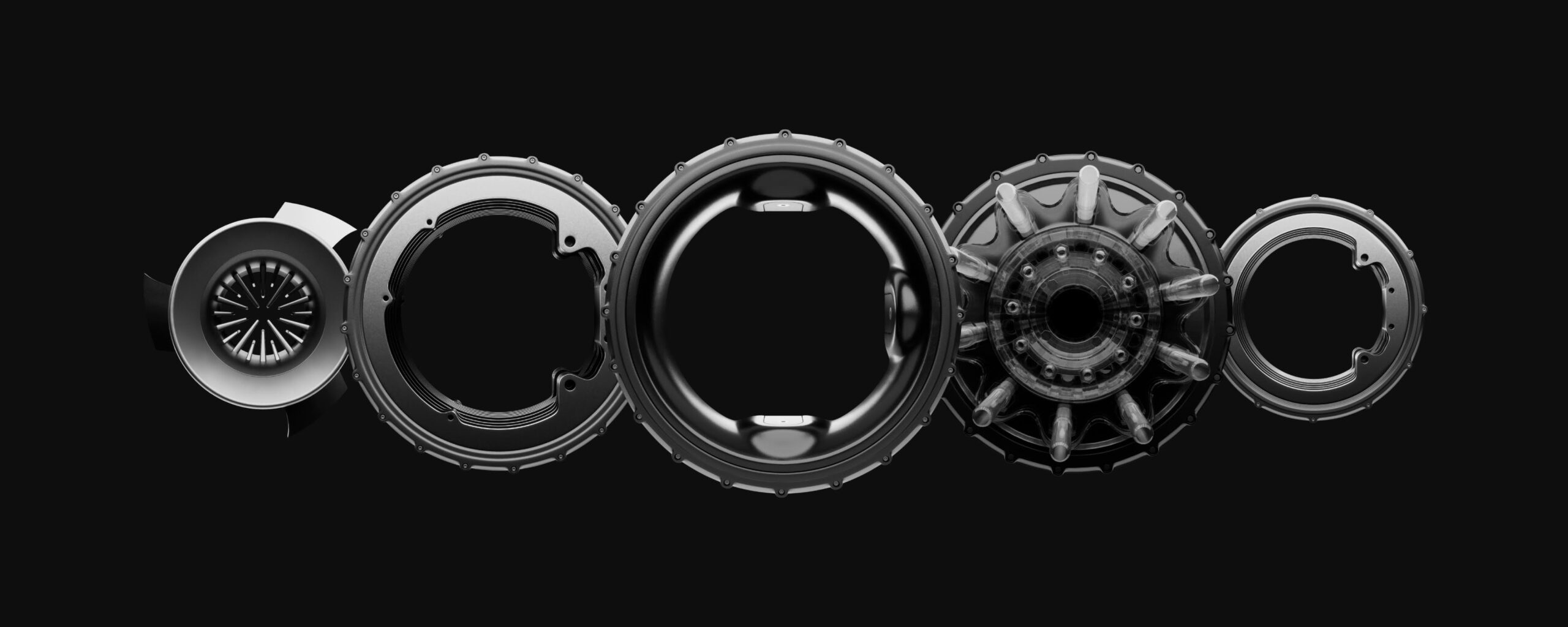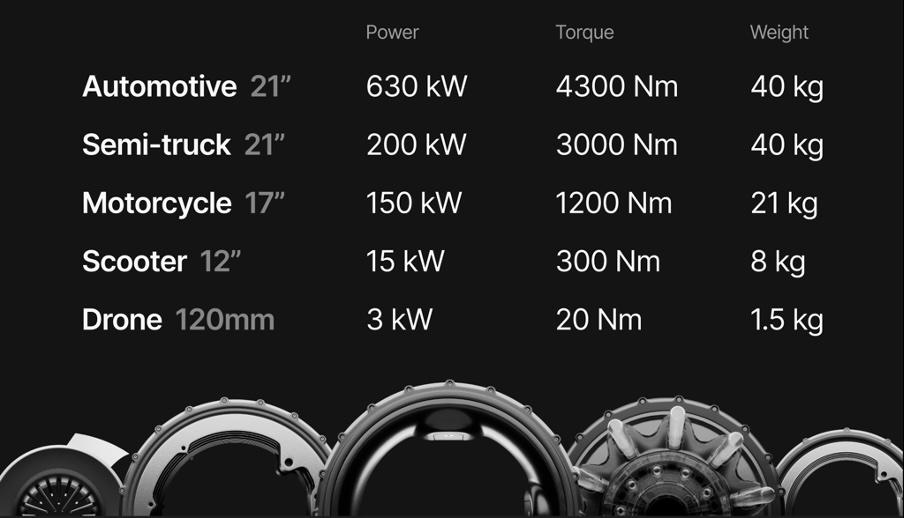One of the big advantages of electric vehicles is their greater freedom when it comes to packaging. Batteries go where it makes the most sense in terms of stability and safety. Electric motors are compact and don’t need much cooling compared to a combustion engine, and there’s no exhaust to worry about.
Putting the motors close to the wheels makes sense—in the wheel itself if possible—and it seems that a startup called Donut Labs may have solved some of the problems hub-mounted motors have faced in the past.
You can see where the name came from—the motors look like metal donuts. That originally had me thinking they used axial flux technology, as some hybrid supercars do, but I was mistaken. These are radial flux motors, just ones that make a lot of torque considering their size and mass.
Hub motors do a lot to simplify an EV powertrain, as there’s no need for any driveshaft or gearing. But they’ve also added unsprung weight in prior implementations, and exposing the motors to the harsh environment experienced by the wheels did little for reliability.
That won’t be a problem with these motors. “We call it the infinite motor because it will outlast the life of the vehicle when done right,” said Marko Lehtimäki, Donut Labs’ CEO.

“It’s really about a manufacturing process more than anything,” said Donut Labs Chief Product Officer Ville Piippo, “to get the process in a repeatable way, like a bulletproof way, so that no magnets or coils or anything are flying in the wrong places.
“It’s very, very difficult to destroy in any other way but crashing in a very traumatic way… because it is really just the one moving part of the bearing,” Piippo told me.
At CES, Donut Labs unveiled a family of five motors; the smallest one is suitable for large drones or uncrewed eVTOL vehicles, and the larger versions are for semi-trucks and passenger cars.
“The set of benefits is different to each application or each size,” Piippo said. “In small things, you’re very price conscious, and you need to kind of optimize for the cost. And then the bigger you go, the more performance you can get or the more performance increase compared to the conventional setup you can get.”
“But then there’s also the kind of unlocked new industries where nobody has been that capable making a heavy lift… drone—like lifting shipping containers or something like this—until now. Because we have a very compact shape and very lightweight design, we can do quite a bit of performance in everything that flies because we can play with the cooling in a smart way with this design,” Piippo said.
For a compact EV crossover, Donut Labs thinks its tech could reduce the number of components in a powertrain by three-quarters, saving weight and assembly time—and therefore money. For a semi-truck, the savings could be an order of magnitude higher, according to the company’s case study.

In fact, the first use has been for motorcycles. The Verge TS Pro electric motorcycle we tested last summer was created to show off the motor technology.
The reaction at CES was positive—”we had maybe 10 to 20 times more business than we anticipated, and we were aiming quite high,” Lehtimäki said.
“Major OEMs have understood for decades that in-wheel motors would be the golden solution if they could get the weight down,” he said. “But I feel that there’s been some education going on in the last few years because it felt to us that everybody we spoke to, you just show the graph of torque and power per kilogram, and they’re like, ‘OK, when can we have it?'”
Plenty can happen between an OEM testing parts for proving and a product appearing in the showroom that uses that technology. But if all goes well, we might see vehicles with Donut Labs’ motors in a couple of years. They may show up elsewhere, too. Lehtimäki told me that interest has come in from outside the automotive and mobility sectors, including applications like wind turbines and washing machines.
That last one has some charming history to it—when inventors were tinkering with electric cars in the 1970s, they often turned to washing machines for a source of torquey electric motors.